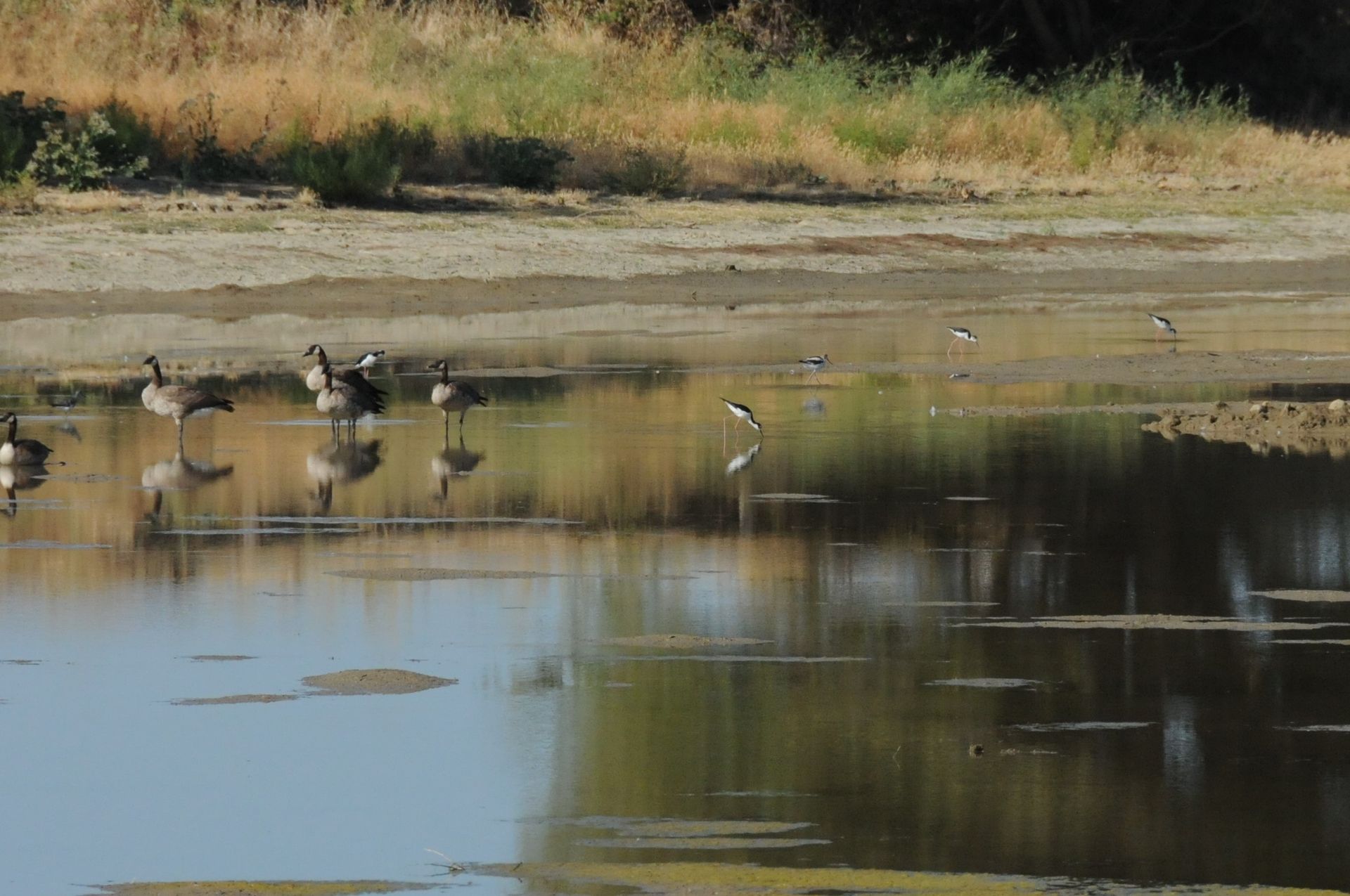Tuleyome's Science Corner: The Value of Ecosystems Found at Woodland Regional Park Preserve

The wetlands at Woodland Regional Park Preserve provide habitat for Black-necked Stilts (Himantopus mexicanus) and Canada Geese (Branta canadensis)
The Woodland Regional Park Preserve (WRPP) located on the corner of Road 102 and Road 25A is home to critical habitats and ecosystems that aren’t just aesthetically pleasing, they play an important role in protecting this area we call home. The habitats at WRPP include Vernal Pools and other seasonal wetlands, as well as Grasslands. Each of these unique habitats play a special role in supporting diverse ecosystems and protecting the resources we rely on each day.
As the name suggests, grasslands are dominated by vegetation from the grass family. This family of plants thrives in areas where there is not enough rainfall to allow for forest growth, but too much to create a desert. The amount of rainfall is just right for these plants! Grasslands provide several crucial benefits to the ecosystem. The first of these occur underground. With a root system that can extend as far down as 3-6 feet, grasses provide a strong system of support in the soil that helps prevent erosion. The long, intertwining, root fibers create a net that actually holds the soil in place, keeping it from moving during periods of strong rains, winds, or floods.
Another benefit to supporting our grassland habitats comes in the form of clean air. Grasses act as natural air filters, pulling carbon dioxide from the air and transforming it into useful materials such as oxygen. They play an important part in cycling nutrients through the atmosphere, biosphere, and geosphere. In the process, they create clean, breathable, oxygen-rich air for us and a healthy food supply for the critters that call this habitat home.
In addition to the grasslands, WRPP plays host to several types of wetlands thanks to its unique topography and soil make-up. When we think about the delicious food products that have made their way onto our plate each night, it’s our wetlands we should thank for this abundance of culinary delights because they create the foundation of our food web. Shallow waters spread out across a large area which characterizes most wetlands gives way to an abundance of diverse life - everything from microbes and bacteria, to insects, plants, and amphibians. Sunlight, the initial source of all our energy, feeds the growth of algae and bacteria, which in turn feeds larger animals. Fertile, wet ground gives way to a wealth of different plants. All of this invites larger animals into the habitat, drawn by the abundant food sources and water. The energy that started with the sun moves its way through the food web in these incredible, diverse wetland habitats and eventually makes its way to our plate, providing us with nourishment.
WRPP is a unique urban park preserve that features several important habitats beneficial to our area. The park will provide us with many things- recreation, opportunities for mental and physical health, and educational opportunities as well. But the habitats found at the park are already hard at work, providing us with many hidden benefits that will continue for years to come.
-Kara Green (kgreen@tuleyome.org)
Education Associate
RECENT ARTICLES






